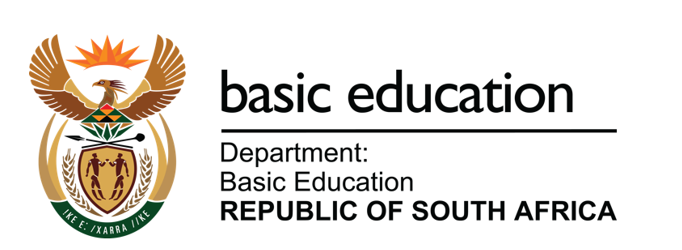
We all know how education is the cornerstone of any society’s advancement. Even the founder of our democracy, Mr. Nelson Mandela, said, “Education is the most powerful weapon which you can use to change the world” (end quote).
Whist education shapes minds, empowers individuals, and drives the development of nations. It equally requires an efficient education management information system (EMIS) to achieve this noble goal.
In a world where education ministries have transitioned to transactional digital systems to collect data instead of surveys, it has become inherently critical to modernise the South African School Administration and Management System (SA-SAMS) to support school administration and management systems to improve and report on operational, strategic and policy goals.
The challenge with current SA-SAMS is that it focuses on collecting data and feeding it to a centralized database for reporting and funding purposes. It lacks the bi-directional feedback of data collected and analytical capabilities to guide decision-making and improve student outcomes.
Technological advancement in education practices necessitates this modernisation due to the immense role that school data plays in education management and big data analytics. The ultimate desired outcome is to have accurate and reliable data which drives data-driven decisions.
The specific aim of modernising SA-SAMS is to have a sound EMIS system that provides interoperability and basic modernised system capabilities that are cloud-based and web-enabled, allowing for workflow, digital document management systems, and microservices.
This goal aligns with the Department of Basic Education (DBE) Action Plan, which seeks to effect organisational change to improve service delivery in a dynamic environment while trying to meet legitimate demands by the public for enhanced and differentiated service levels.
Unlike the current SA-SAMS, the modernised SA-SAMS will have capabilities to be scaled on demand, with industry-standard security protocols, in addition to exchange capabilities or integration with other government systems using open data standards.
The SA-SAMS Project Team uses OpenEMIS, a United Nations Education, Scientific, and Cultural Organisation (UNESCO)’s open-source technology platform, to modernise SA-SAMS. The software can be customised for databases, forms, indicators, and reports to meet education system requirements.
Following the inability to find a suitable vendor to modernise the current SA-SAMS, through the DBE relationship with UNESCO, the OpenEMIS solution was investigated and found to be a 60% fit for the core base functionality of the current SA-SAMS. The DBE governance committees agreed to implement OpenEMIS and then further developed to fulfil the modernisation requirements.
As of 2021, agreements with UNESCO were concluded to acquire OpenEMIS software, configured and implemented in the South African cloud environment to kickstart the modernisation project.
The SA-SAMS baseline and modernisation requirements for Learner Management and School Management were completed in 2022. During this period, the offline solution for schools with no connectivity was piloted successfully. The Human Resource functionality, with the remainder of Learner Management and School Management functionalities, was completed in the first half of 2023.
The project commenced with Curriculum Management in the latter part of 2023, and the targeted completion date is May 2024.
The pre-pilot activities will start in September 2024 for learner data preparation and migration. The pilot will target about 10% of the total schools in the country.
To ensure successful piloting, plans are afoot to deal with connectivity challenges and school infrastructure. The District Pilot Steering Committees (DPSCs) are already being established to work with Provincial Education Departments (PEDs) to ensure capacity and capabilities are built at the district and circuit levels. The DPSC aims to provide strategic guidance and oversight to pilot initiatives, ensuring effective planning, implementation, monitoring, and evaluation of crucial district tasks to roll out the SA-SAMS modernisation pilot.
Ongoing support and capacity building at national and provincial levels is paramount to embed the new solution. At the provincial level, the PED EMIS team (Provincial EMIS Directors and EMIS officials at the PED level) will be engaged in the project to facilitate knowledge transfer. Nationally, the DBE EMIS team will be trained to support the solution’s configuration through the call centre, WhatsApp bot, etc.
The sector looks forward to some exciting improvements to the modernised SA-SAMS solution. The modern SA-SAMS solution will improve the user experience for the sector by providing insights that can help educators, principals, circuit and district officials, and policymakers make crucial decisions that continually improve teaching and learning across the country.
Some of the expected benefits, amongst others, will be:
- Promotion of e-education that exposes the sector to new technologies;
- Real-time performance in managing and measuring data residing in a centralised repository;
- Improved data integrity that enables reliable data analytics for informed decision-making and
- World-class application that will be free to all the provinces and schools.
In closing, the accessibility considerations of users or schools with technological challenges such as connectivity will also be addressed through this modernised system. The modernised SA-SAMS will offer offline applications for remote areas without access to the web.



One response to “Theme 1 – Introduction and Awareness-Introduction to SA-SAMS Modernisation”
Can I do the course